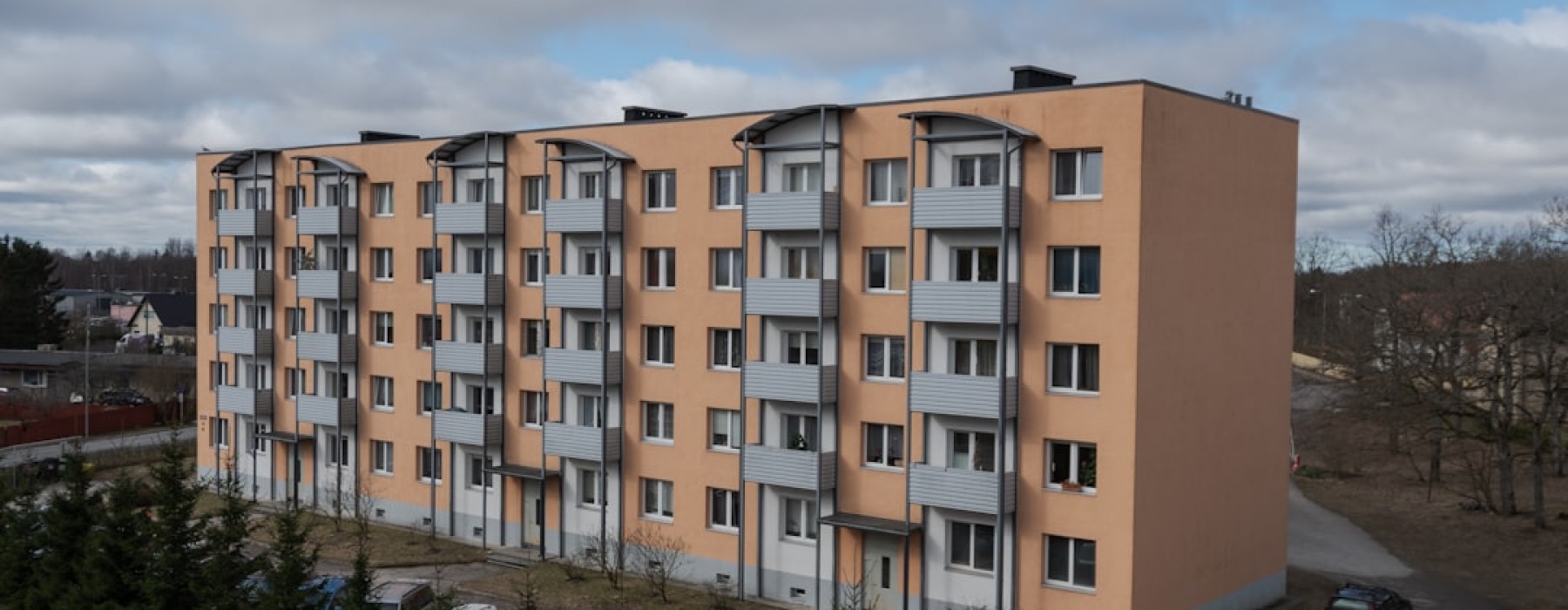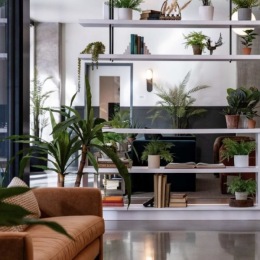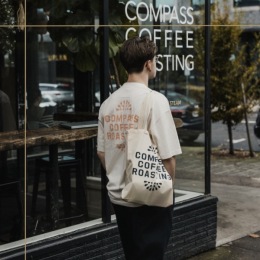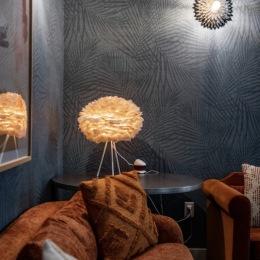Why Controlled Access Apartments Are Changing How We Live
Apartments with controlled access are residential buildings that use electronic systems to limit entry to authorized residents and approved visitors only. Unlike traditional apartment buildings where anyone can walk into the lobby, these properties require key cards, mobile apps, PIN codes, or other credentials to enter.
What defines controlled access apartments:
- Electronic entry systems at all building entrances
- Resident credentials (key fobs, mobile apps, or PIN codes)
- Video intercoms for visitor verification
- Secure package delivery areas
- 24/7 monitoring and access logs
The demand for secure living is surging. More than 80% of residents want video intercom and remote door features, while secure access ranks as the most desirable apartment feature according to recent surveys.
Package theft alone cost Americans $5.4 billion in 2020, with 84% of residents wanting secure delivery access to protect their purchases.
Modern controlled access integrates with smart home features, offers mobile-first convenience, and provides property managers with detailed security insights through cloud-based dashboards.
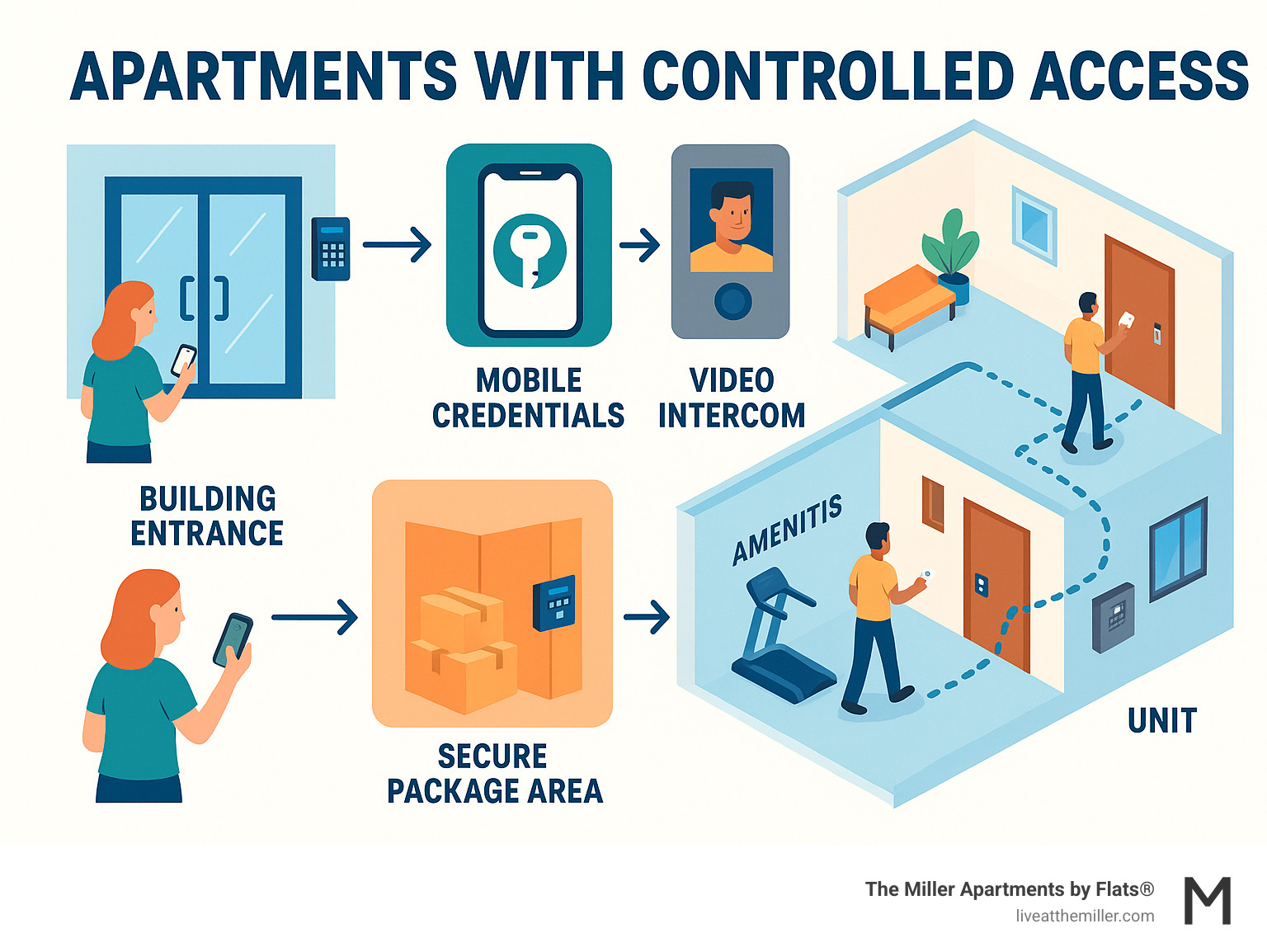
Controlled Access vs. Gated Access: Know the Difference
When apartment hunting, you'll often hear "controlled access" and "gated access" used interchangeably. While they sound similar, these security approaches work very differently.
Controlled access focuses on securing building entrances. Residents need specific credentials - like key cards, mobile apps, or PIN codes - to enter the building itself. Once inside, you can usually move freely through common areas.
Gated access secures the property's perimeter. You punch in a code to get past the entrance gate, then can walk around the entire property and potentially approach any building without additional security checks.
| Feature | Controlled Access | Gated Access |
|---|---|---|
| Entry Point | Building entrances | Property perimeter only |
| Visitor Process | Must be buzzed in by residents | Can roam freely once past gate |
| Security Level | Building-specific | Property-wide but less granular |
| Privacy | High - limits building access | Moderate - open movement inside |
| Technology | Electronic locks, intercoms, apps | Gate systems, remote controls |
Why the Distinction Matters for Apartments with Controlled Access
Crime deterrence works more effectively with controlled access systems. While someone might slip past a perimeter gate by following an authorized vehicle, they can't easily enter your actual building.
Privacy protection becomes significantly stronger. In gated communities, anyone who makes it past the entrance can potentially hang around common areas or building entrances. With controlled access, only residents and their approved guests can enter the building where you actually live.
Emergency response improves because first responders can quickly identify which specific building needs attention. Property managers can grant targeted access permissions without compromising security at other buildings.
Apartments with Controlled Access: How the Technology Works
The technology powering apartments with controlled access has evolved far beyond simple lock-and-key systems. Today's systems feel almost magical - tap your phone, wave a card, or punch in a code, and doors open seamlessly.
RFID key fobs and cards contain encrypted chips that communicate with door readers when you get close. They're nearly impossible to duplicate, unlike traditional keys. If you lose one, property managers can instantly deactivate it and issue a replacement.
Mobile credentials turn your smartphone into your key through specialized apps using Bluetooth or NFC technology. No more fumbling for keys when your hands are full. You can even grant temporary access to visitors right from your phone.
PIN keypads serve as reliable backup when technology hiccups happen. Some systems let residents create personal codes, while others generate temporary codes for deliveries or maintenance visits.
Video intercoms connect directly to your smartphone, so you can see who's at the door even when you're not home. A quick video chat and a tap on your screen grants access.
Cloud-based dashboards give property managers real-time control over the entire system. They can instantly grant or revoke access, monitor unusual activity, and track who entered where and when.
Credentials, Readers & Platforms
Key cards using advanced encryption work across multiple access points throughout the building. One card opens the front door, accesses the fitness center, and opens the parking garage.
Biometric options like fingerprint readers and facial recognition offer ultimate convenience - you literally become the key. Enrollment typically takes just a minute through mobile apps.
Cloud APIs enable seamless integration with other building systems. Your access credential might automatically call the elevator to your floor or adjust common area lighting based on occupancy patterns.
Properties that feature comprehensive amenities often integrate these systems throughout the entire community experience.
Smart Home Integrations Inside Apartments with Controlled Access
Smart thermostats learn your schedule and can pre-cool or warm your apartment based on when your access credential indicates you're entering the building.
Automated lighting systems work in harmony with access patterns, gradually brightening pathway lights as you approach your building or adjusting indoor lighting based on your typical arrival times.
These integrations represent the future of apartment living, where controlled access becomes the foundation for a fully responsive home environment. Communities featuring modern design apartments often lead the way in resident satisfaction.
Benefits and Drawbacks for Residents
The decision to live in apartments with controlled access comes with both exciting advantages and practical considerations. Most residents find the benefits far outweigh any challenges, but understanding the complete picture helps you make the right choice.
Recent research shows significant crime deterrence benefits in multifamily housing. However, the quality of implementation makes all the difference in your actual experience.
Safety & Convenience Upsides of Apartments with Controlled Access
Peace of mind transforms how you feel about coming home each day. There's something deeply comforting about knowing that every person in your building belongs there.
Package security solves one of modern apartment living's biggest headaches. Apartments with controlled access typically feature dedicated package rooms or smart locker systems that keep your deliveries secure.
Reduced break-in rates speak for themselves. Buildings with controlled access systems experience dramatically fewer unauthorized entries compared to traditional apartment buildings.
Remote access capabilities add convenience that feels almost magical. Expecting a food delivery while you're still at work? No problem. Your smartphone becomes your building's master key.
Privacy benefits extend beyond just security. Using amenity spaces feels more comfortable when you know everyone around you is a fellow resident or their invited guest.
Potential Challenges to Consider
Higher rental costs represent the most straightforward trade-off. Maintaining sophisticated access control systems requires ongoing investment, and property owners typically pass these costs along through rent.
Guest inconvenience can create awkward moments when friends or family struggle with entry procedures. Visitors need to coordinate arrival times or wait for you to grant access.
Technology dependence creates vulnerability during system failures. Power outages or equipment malfunctions can temporarily lock residents out, though quality systems include backup procedures.
Strict visitor rules might clash with your social lifestyle. Some buildings limit visitor hours or require advance guest registration.
What to Look For (and Budget) When Renting a Controlled-Access Apartment
Finding the right apartments with controlled access means looking beyond flashy technology to understand how well the systems actually work day-to-day. Not all controlled access is created equal.
Credential flexibility should top your must-have list. You want multiple ways to get into your building - mobile apps, key cards, and backup PIN codes. Ask property managers about their replacement process and fees for lost credentials.
The best properties offer 24/7 technical support because access systems don't only break during business hours. Quality properties maintain emergency support contracts that guarantee someone can help you get inside, no matter when problems occur.
Delivery accommodation varies wildly between buildings. Some properties have dedicated package rooms with secure access, while others offer sophisticated locker systems that text you pickup codes. The most frustrating buildings have controlled access but no plan for deliveries.
Modern package locker integration represents the sweet spot for delivery security. These systems automatically generate temporary access codes when packages arrive, then notify you via text or app.
Don't overlook backup power systems during your apartment search. Quality installations include battery backup for critical systems and manual override procedures that maintain security while ensuring resident access.
Watch out for monthly technology fees that might appear as separate line items on your lease. Get clarity on all fees before signing anything.
Amenity integration adds real value when your access credentials work seamlessly across the entire property. The best systems let you use the same mobile app or key card for building entrances, fitness centers, pools, and coworking spaces.
When exploring your options, checking out floorplans and browsing gallery images can help you visualize how controlled access features integrate with overall apartment design.
Balancing Cost and Value in Apartments with Controlled Access
Rent premiums for controlled access vary based on system sophistication and local market conditions. The key is understanding what you're paying for and whether it aligns with your priorities.
The return on investment goes beyond dollars and cents. Yes, you might save on insurance premiums or avoid package theft losses. But the real value often comes from improved peace of mind and daily convenience.
The smartest approach involves evaluating your complete housing budget rather than focusing solely on monthly rent. Factor in potential insurance savings, reduced theft risk, and the personal value of improved security and convenience.
Visitor, Delivery & Privacy Considerations
Managing visitors and deliveries in apartments with controlled access requires thoughtful planning, but the right systems make everything surprisingly smooth.
Guest PIN systems work like magic for expected visitors. Residents simply generate temporary access codes through their smartphone app - maybe a 15-minute window for pizza delivery or a longer code for weekend guests. These single-use codes expire automatically.
Video verification transforms the traditional buzzer system. When someone rings your apartment, you can see and chat with them through your phone, even if you're across town.
Courier access programs solve the delivery puzzle by giving major shipping companies temporary building credentials. These programs typically limit access to specific hours and areas.
Modern systems take data encryption seriously, using the same security standards as banks to protect resident information and access logs.
Managing Deliveries in Apartments with Controlled Access
Package hub systems create dedicated secure areas where carriers can leave deliveries without accessing the main building. Residents get text alerts with retrieval instructions.
Automated locker systems represent the ultimate delivery solution. Carriers receive temporary codes to place packages in secure compartments, then residents get retrieval codes via text or app notification.
The beauty of automated lockers lies in their 24/7 availability. Packages wait securely until residents can retrieve them at their convenience.
Carrier integration programs streamline the process by working directly with major shipping companies, providing delivery personnel with time-limited building access.
Guarding Personal Data While Enjoying Convenience
Privacy protection in controlled access buildings requires ongoing attention, but residents shouldn't feel overwhelmed by the technology.
GDPR-style principles guide the best controlled access systems, even in areas where such regulations don't legally apply. Quality buildings treat privacy as a fundamental right.
Opt-in biometrics respect individual comfort levels by making facial recognition and fingerprint scanning completely voluntary. Residents who prefer traditional access methods shouldn't face any inconvenience.
Clear retention policies spell out exactly how long access logs, video footage, and personal data remain in building systems. Most quality buildings automatically delete routine access logs after 30-90 days.
For residents exploring communities that balance controlled access with pet accommodation, pet-friendly apartment options in Vancouver demonstrate how thoughtful buildings integrate security with lifestyle needs.
Frequently Asked Questions about Apartments with Controlled Access
What makes apartments with controlled access safer than traditional buildings?
The safety difference comes down to one simple concept: who can walk through your front door.
In traditional apartment buildings, pretty much anyone can stroll into the lobby or follow residents through open doors. Apartments with controlled access flip this script entirely. Every person who enters must have valid credentials - whether that's a key card, mobile app, or PIN code.
The technology creates "layers of protection." Even if someone manages to get past the front entrance, they'll likely encounter additional controlled access points at elevators or amenity areas.
Video intercom systems add another powerful safety feature. You can actually see and talk to visitors before deciding whether to let them in.
Perhaps most importantly, every access attempt gets recorded with timestamps and credential information. If something does happen, property management has detailed logs showing exactly who entered the building and when.
Do controlled-access features increase my monthly rent and utilities?
Apartments with controlled access typically cost more than traditional buildings. The technology isn't free, and those costs usually get passed along to residents.
The rent increase reflects real ongoing expenses. Electronic access systems need regular maintenance, software updates, technical support, and occasional hardware replacements.
Good news about utilities: controlled access systems barely impact your electricity bill. The electronic locks and card readers consume minimal power.
Many residents find that controlled access actually saves them money in unexpected ways. Package theft drops dramatically, so you're not constantly replacing stolen deliveries. Some insurance companies offer discounts for residents in controlled access buildings.
How do visitors or service professionals get inside a controlled-access community?
Getting visitors into apartments with controlled access buildings is actually much easier than most people expect.
The smartphone solution works best for most situations. When your visitor arrives, you open your building's app, see them through the video intercom system, and tap a button to grant access. The whole process takes about 30 seconds.
Temporary PIN codes offer another flexible option. Most systems let residents generate time-limited access codes for expected visitors. Perfect for service appointments when you can't be available to buzz people in.
Pre-scheduled access works wonderfully for regular service providers. Property management can often provide temporary credentials for specific time windows for weekly housekeeping, dog walking, or other recurring services.
Most residents find that after a week or two, managing visitor access becomes second nature.
Conclusion
The world of apartment living is changing, and apartments with controlled access are leading that change. These aren't just buildings with fancy door locks - they're complete living ecosystems that understand modern renters want both security and convenience without compromise.
When package theft costs Americans billions each year and urban living keeps getting more complex, controlled access isn't really a luxury anymore. It's becoming as essential as reliable internet or in-unit laundry.
Today's controlled access systems work through your smartphone, integrate with your smart home devices, and actually make life easier rather than more complicated. Video intercoms let you see who's at the door even when you're across town. Mobile credentials mean you'll never get locked out because you forgot your keys.
Apartments with controlled access typically cost a bit more each month. But when you factor in the reduced stress, better package security, and that wonderful feeling of knowing your building truly prioritizes your safety, most residents find the investment worthwhile.
The key is finding a property that implements controlled access thoughtfully, not just as a marketing checkbox. Quality systems need responsive management, reliable technical support, and designs that improve rather than complicate daily routines.
At The Miller Apartments by Flats®, controlled access integrates naturally with everything else that makes modern living great. The security technology works alongside wellness amenities like the day spa and fitness center, plus practical features like the coworking lounge. It's all designed to work together, creating a living experience where safety and sophistication support each other.
Ready to see how controlled access can improve your daily life? Contact The Miller to schedule a tour of our Vancouver Waterfront community. Experience how the right controlled access system doesn't just protect your home - it improves every aspect of apartment living.
Because at the end of the day, home should be the place where you feel most secure, most comfortable, and most like yourself. Apartments with controlled access make that possible in ways that seemed like science fiction just a few years ago.
